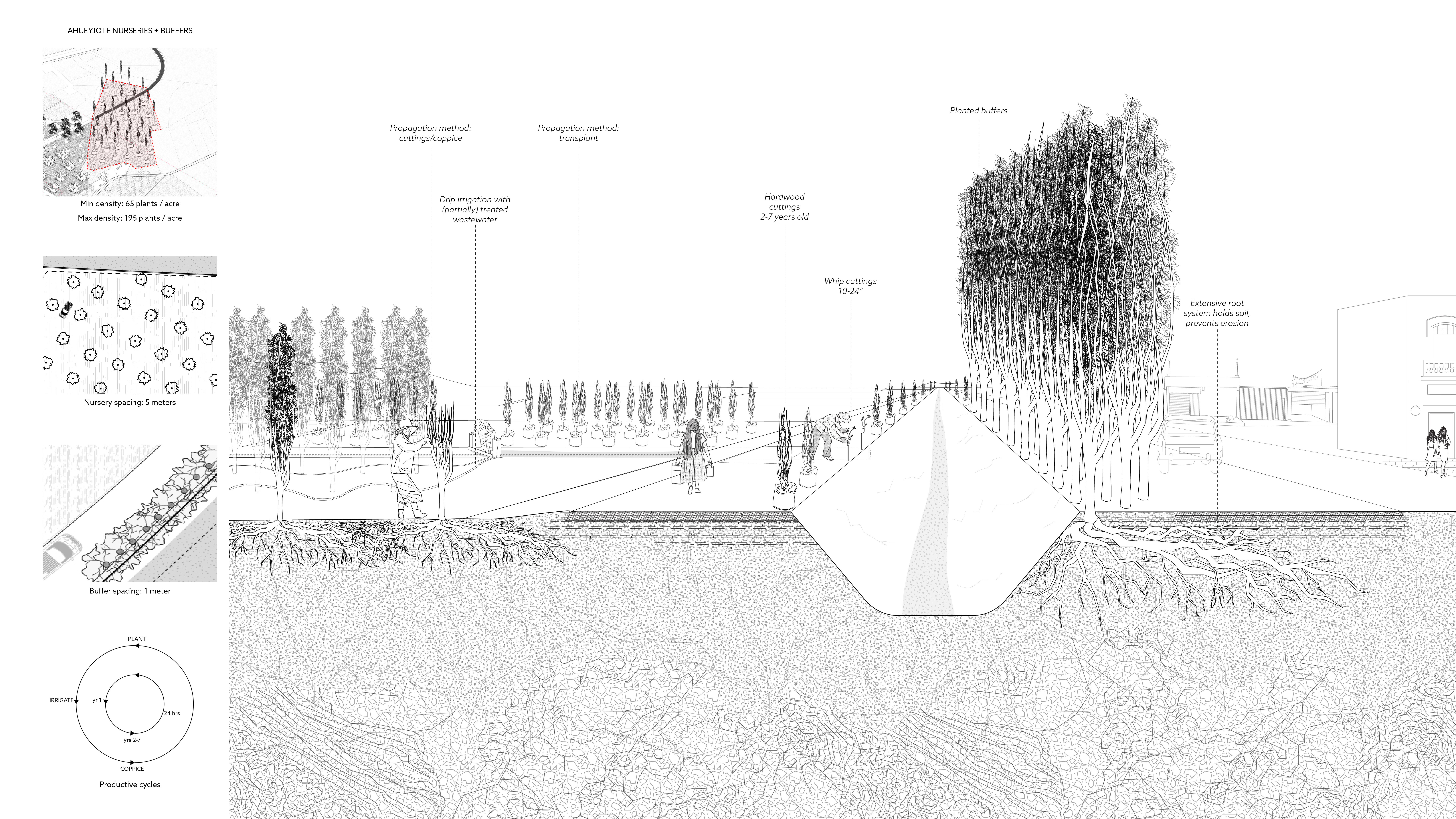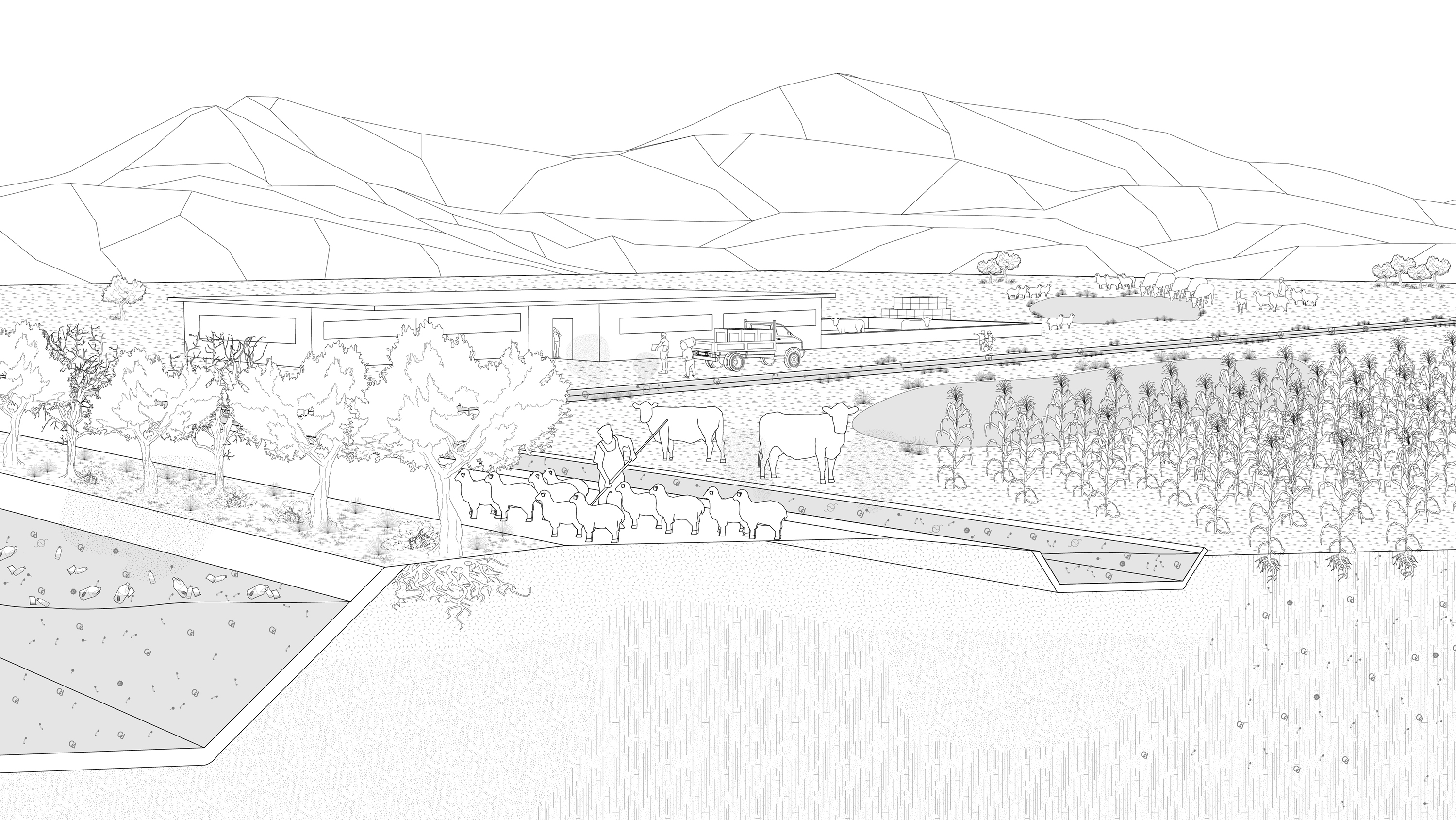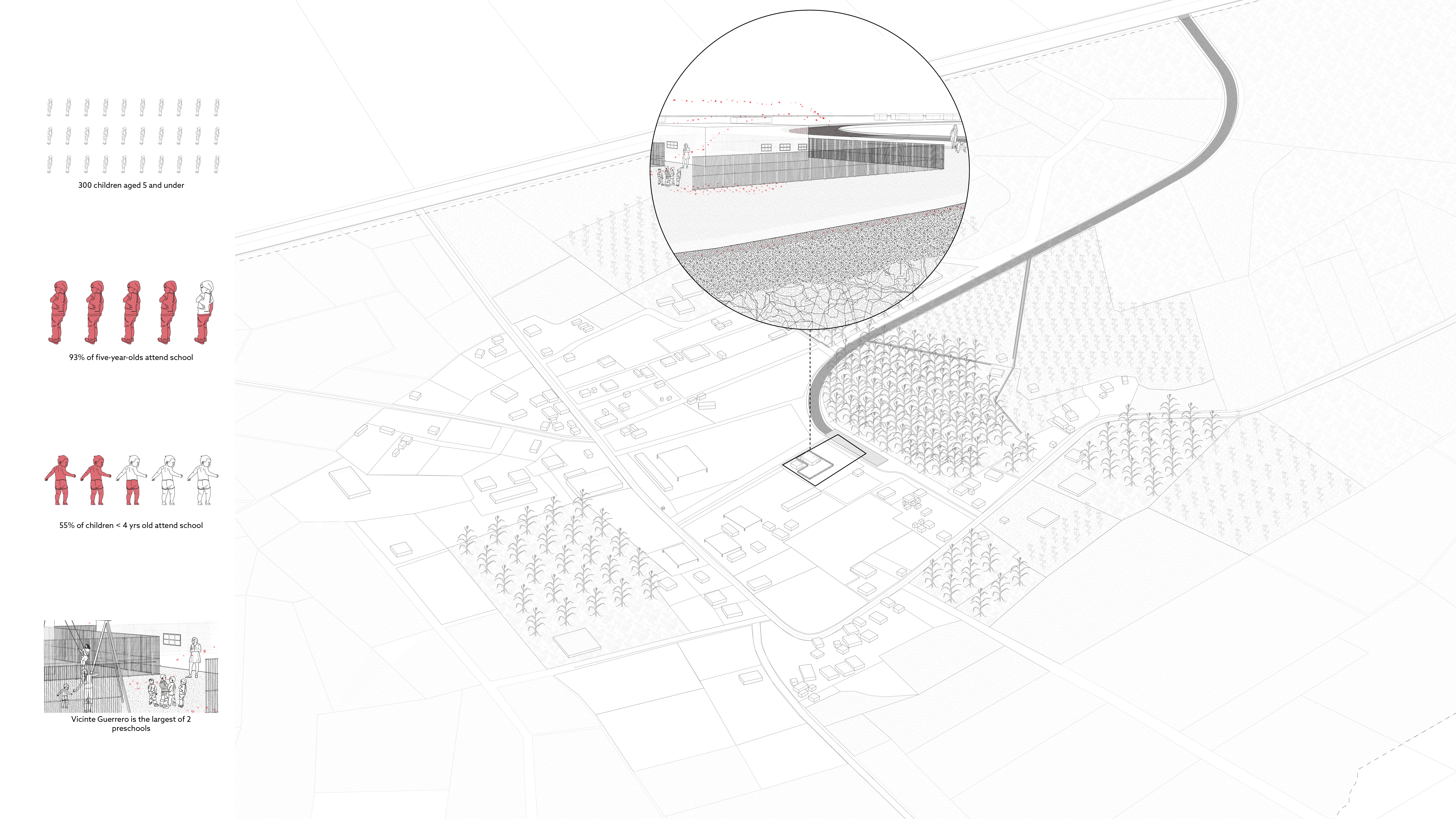
New Visions for Wastewater Equity in The Mezquital Valley
Introduction by Montserrat Bonvehi, Lecturer in Landscape Architecture at Harvard’s Graduate School of Design, and Seth Denizen, Kiley Teaching Fellow in Landscape Architecture at Harvard’s Graduate School of Design
Almost 200,000 acres of land in the fertile Mezquital Valley are irrigated with the untreated sewage of Mexico City. Rainwater, urban runoff, industrial effluent, and sewage in Mexico City is sent to the Mezquital Valley through a 60-kilometer pipe. Soils in this valley have been continuously irrigated with urban wastewater since 1901, longer than any other soil in the world.
The capacity of these soils to produce conditions in which agriculture can be safely practiced and produce healthy crops depends on complex interactions between soil composition, chemistry, ecosystem function, farming practices, public policy, land management, and the urban design of Mexico City’s hydraulic infrastructure. Without this wastewater, the Mezquital Valley would be a desert, as it falls into the UN’s “drylands” climate category, where rates of evapotranspiration exceed precipitation. Currently, more than 40% of the world is classified as “drylands,” making the Mezquital an important case study in wastewater reuse for a warming world.
The goal of this research project, supported by the SOM Foundation, is to evaluate the successes and failures of the Mezquital Valley as the world’s largest experiment fertilizing agriculture with human wastewater. What hydraulic, soil, ecosystem, social and policy conditions increase chances for success? What are its prospects for socio-ecological sustainability? In order to address these questions, we have partnered with farmers, urban water experts, and soil scientists, in order to understand both sides of the wastewater pipe as part of the same agricultural system. In the fall of 2020, this research culminated in a studio, STU-1404 The Right to the Sewage.
In the studio, students developed projects that confronted material relations on both sides of the sewage pipe. Over the course of the semester, the studio engaged with scholars and activists from Mexico, and benefited from a collaboration with Mexican students of edaphology at UNAM, the National Autonomous University of Mexico. These proposals, along with our ongoing research in the Mezquital Valley, will now form the basis of a bilingual website and a book whose working title is Wastewater Urbanism.
Student Projects:
Water at the Edge: Towards Water Independence for Mexico City’s INFONAVIT Housing
Ciara Stein, MLAI & MUP ’21
Mexico City's Urban Periphery
The urban periphery of Mexico City can be understood through multiple conditions – social marginalization, the geologic shift from basin to mountain, and increasing bands of precipitation. Together there is a ‘geo-social’ condition, where the geography of resource extraction combines with social marginalization to create conditions of limited access to education and public utilities.
At edge of the city, INFONAVIT housing is being developed at astounding rates. INFONAVIT is a controversial state program, started in 1972, that provides social housing through a privatized system with funding from the World Bank, the Inter-American Development Bank, and other international investors. INFONAVIT receives 5% of all formal workers’ salaries and provides a series of housing-related mortgage products. Typically, they issue approximately half a million loans per year.
INFONAVIT developments have a contentious relationship with water. Homes are regularly disconnected from pipes and sewage systems, and pipas (water delivery trucks) irregularly service the communities. While its execution is flawed, the vision of worker housing is radical and valuable. The system could be great if it achieved its own goals: to provide quality housing to low-income people who cannot otherwise afford it. By suggesting a new INFONAVIT typology, we are contributing to this vision of how INFONAVIT could serve low-income workers. The project proposes new INFONAVIT-financed communities that are hydrologically autonomous.
Drawing from Tatiana Bilbao’s design for the Apan Housing Laboratory, the project proposes infrastructure and spaces to capture and collectively hold water through the rainy and dry seasons. The flexible structure of housing can expand and contract depending on site and need, also allowing for staggered development. Water at the Edge seeks to flip the image of extreme abandonment in the urban periphery and make it the basis of a new proposal that promotes civic life and water independence.
From Birth to Product: Sheep Rearing in the Mezquital
Olivia So, MLA I ’21
Current Conditions
The State of Hidalgo is the second largest producer of sheep in Mexico. Raising sheep is heavily integrated with not only agriculture but also cultural practices. Sheep meat is predominately used in the preparation of barbacoa. Wool can also be sheared for traditional clothing and handicrafts. In recent years, Mexico has increased imports of frozen lamb from the United States, New Zealand, and Australia to satisfy domestic demand, demonstrating an opportunity to increase domestic production.
Sheep husbandry in the Mezquital Valley are not large scale operations. Instead, production exists on the family level on their surrounding properties. Meat or milk produced are often reserved for family subsistence, local sale, or as emergency savings. The ever-present wastewater canals that weave throughout the Valley prove to be one of the largest public health risks to not only animals but also to humans living around the canal. By implementing transit corridors away from roads and major wastewater canals, sheep and residents will be protected during their daily walks and vector potentials will be limited. By improving routes for grazing and creating public spaces and facilities centered around sheep rearing and its products, the economic opportunities and health of families can be improved.
The Public School System in the Mezquital and Desert Landscapes
Alana Godner-Abravanel, MLA ’21
Vicinte Guerrero Preschool Dryland Buffer Zone
Much of this dryland knowledge is still practiced by Indigenous Otomi populations, though they have been routinely marginalized both politically and geographically. This project acknowledges their role as keepers of this knowledge, as well as the need of Mezquital residents to reconnect with their cultural histories and traditions of dryland production. It is also met with the realities of an agricultural region that must participate in local and global economies. In partnership with UNAM graduate soil scientists, relationships between wastewater components (e.g. lead) and soil types are examined in depth.
Thicken the Line: Expanding Private Boundaries for Collective Enterprise in the Mezquital Valley
Gracie Villa, MLA ’21
Land Tenure Evolution
Recognizing this pattern, Thicken the Line proposes to expand communal space and labor practices across the Mezquital valley to increase the viability of farming, habitation, and traditional ways of life, well into the future. To do so, new agricultural typologies, communal processing areas, and urban public spaces are developed under a linear network of communal land, establishing a “New Ejido.” This scalar network builds on the existing land tenure system by thickening the legal property line between the plots within current ejido boundaries. Re-collectivization aims to decrease migration by addressing the pressing environmental and public health concerns caused by wastewater irrigation and a lack of public infrastructure, while supporting secondary economies that produce essential incomes for each family. This approach expands upon long-standing, collaborative practices at the center of the Otomi culture, and aspires to celebrate those voices after centuries of marginalization.








